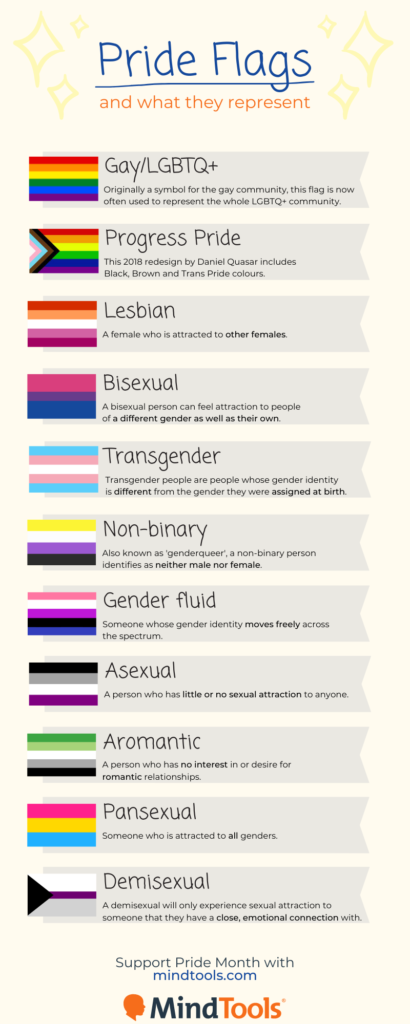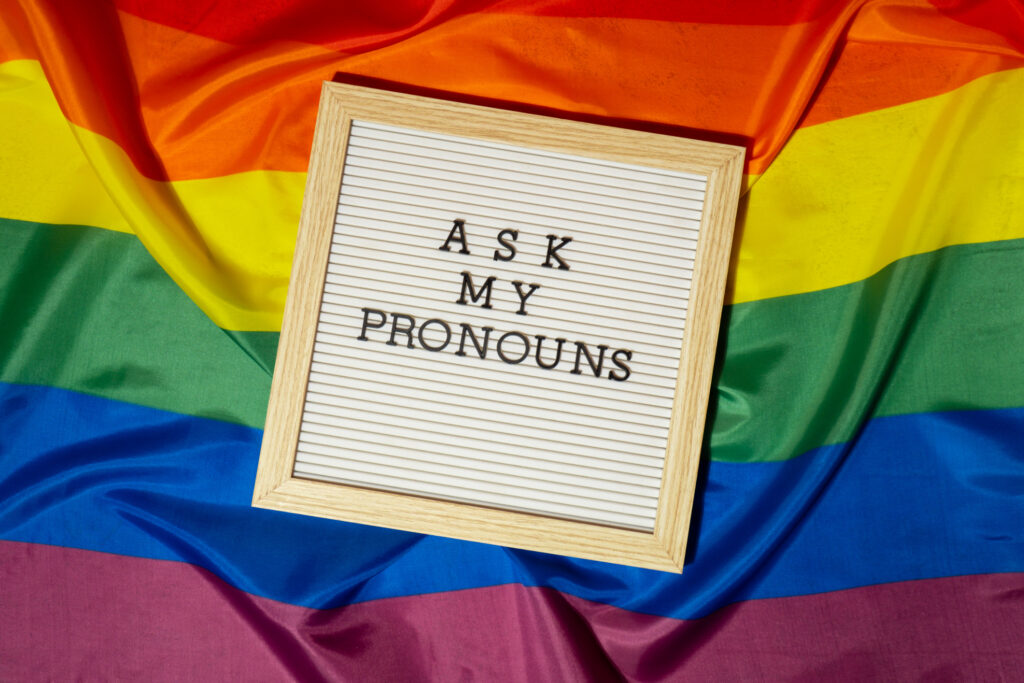Note: a version of this blog first appeared in 2019. We have since updated it to bring you the best tips!
June marks Pride Month for the U.K., U.S. and Australia. And yet, despite progress and increased public support for LGBTQ+ equality in recent times, many people who belong to the community are still discriminated against, in the workplace and outside of it.
In fact, according to data collected by the Human Rights Campaign Foundation, 46 percent of people are still closeted at work. Some of the main reasons for this are fear of being stereotyped (38 percent), worries over making others feel uncomfortable (36 percent), and concerns about losing friends (31 percent).
In many territories across the world, being or behaving in a way that implies you're LGBTQ+ can still have severe consequences. In fact, 71 countries still criminalize same-sex relationships, with eight countries even using the death penalty as a punishment. And in more than half of the world, LGBTQ+ people are not protected from discrimination by workplace law.
One of the few spaces that can have real impact in improving LGBTQ+ equality is the workplace. And unsurprisingly, being an LGBTQ+ inclusive employer is great for business too. It "positively impacts recruitment, retention, engagement and, overall, total revenue" according to the Human Rights Campaign Foundation. But it takes effort – and it's not only up to LGBTQ+ colleagues to change the workplace culture. It's up to the rest of us, too.
Often – far too often – we tend to tell ourselves, "What can I do?" or, "It's none of my business." We might think we're too ignorant or out of the loop to really understand the things that impact our LGBTQ+ colleagues. We might be worried that we'll make a mistake and cause offense, without intending to. We might even think that the war for equality has been won, now that same-sex marriage is legal (in some territories), and other rights activists are openly doing more to achieve equality in legislation.
But allies to the community are key to long-term transformation. This is particularly the case in workplaces, where co-workers and supervisors can use their influence to change mindsets, call out negative stereotyping and discrimination, and celebrate the uniqueness and diversity of colleagues.
You don't have to be a member of the LGBTQ+ community to support it. It's not even difficult to do. It takes respect, and the ability to listen (properly listen without interrupting) and learn.
So, if you want to show your support but aren't sure how to do it, here are a few things you can do to become a true ally to your LGBTQ+ colleagues:
Pride Month is a great opportunity to learn! So why not take some time to discover the story behind how Pride started? Or learn more about some of the key figures who changed the course of LGBTQ+ history?
Brush up on terms, too. We use the term LGBTQ+ frequently, but do you actually know what it stands for? LGBTQ+ is an initialism for Lesbian, Gay, Bisexual, Transgender, and Queer, while the "plus" includes other sexualities and identities, such as pansexual, intersex and asexual. While the term is relatively new, remember that LGBTQ+ people have always existed – from way before this term became popular!
Over the years, Pride has become much more diverse to encompass many different sexualities and identities, some of which are still not fully understood. This can at times feel confusing (there's a lot to learn!). To help out, we've produced a handy infographic that includes some of the different Pride flags and what they represent:

It's also important to remember that the LGBTQ+ community itself differs in opinions and beliefs, sometimes widely and strongly. Be open and respectful to these varied opinions. As long as they're not hurtful or abusive, they can tell you a lot about the unique perspectives of the LGBTQ+ community and the issues facing it.
Unless a colleague specifically mentions their sexual orientation, it's unprofessional and inconsiderate to make assumptions. After all, you may be wrong. There's no way of knowing whether someone is LGBTQ+ without asking them. Assuming that you have "gaydar" can actually perpetuate harmful stereotypes.
Even if you know that one of your colleagues is LGBTQ+, it's important to let them decide if and when they want to let others know. They may be very private. Keep in mind that they need to make this decision repeatedly – whenever they start a new job or meet new people.
Avoid putting your LGBTQ+ colleagues in the uncomfortable position of speaking for the whole group. Just because your colleague is transgender doesn't mean that they want to talk about transgender issues all the time, or that they're some kind of spokesperson for the transgender community.

Use language that recognizes that people have diverse lifestyles, relationships and families. For example, instead of asking about someone's "husband" or "wife," you could ask about their "partner." Or instead of "mom" and "dad," say "parent."
If you still aren't sure what terms you should be using, ask! This is a sign of respect and an easy way to demonstrate your support for LGBTQ+ colleagues.
No matter how well-intentioned you are, chances are you've used gendered words in the workplace. But using non-inclusive words regularly can have a negative impact on people who already feel that they don't fit in to what's perceived to be the "norm."
Just think about the following phrases:
The above are gender assumptive. They only recognize two main genders, but the truth is that some people don't belong to either. They might be gender fluid or non-binary. So try using more inclusive language instead, such as:

The pronouns that we use (he or she or they) are tied intrinsically to our identity. So it's important that we get these right – particularly when it comes to our colleagues.
Some people may be trans; others may be gender neutral. And yet, far too often people assume pronouns for other people. Often this is reflexive, but getting it wrong can cause people upset (even if it's unintentional). So, if you're unsure, ask someone, "What's your personal pronoun?" This is an open, low-pressure question that allows someone who's in the process of transitioning or has already transitioned to affirm their identity.
You can also do your bit by updating your own pronouns in visible spaces – for example, on social media profiles, or on internal communication platforms, via your IM profile and email signature. Doing this supports trans and non-binary people by normalizing gender identity and expression.
Intolerance in the workplace can take the form of overt abuse or microaggressions. Obviously, overt abuse and harassment have no place in the workplace, and a zero-tolerance approach should be taken.
Pinpointing and dealing with microaggressions can be more tricky. According to professor of psychology Dr Kevin L. Nadal, microaggressions are "commonplace verbal, behavioral, or environmental actions that communicate hostility toward oppressed or targeted groups."
They might seem like small things; but, over time, they can have a serious impact on a person's physical and mental wellbeing. Furthermore, ignoring them can serve to perpetuate inequality and undermine inclusion.
Common examples of microaggressions are things like, "You don't look gay," or, "How did you turn gay?" They can also include misgendering, tokenization, failure to acknowledge LGBTQ+ relationships, or exclusion from social groups.
When perpetrators are called out on their behavior, they might qualify it with things like, "You're being oversensitive," or, "I was just joking." This can make it tricky to tackle this kind of behavior. Dr Nadal suggests victims or witnesses ask themselves five questions to help them decide how to respond:
If you do decide to take action, respond assertively rather than aggressively. Calmly talk to the person about how their words and behavior have affected you. Use "I" statements such as, "I think what you just said was very hurtful," instead of attacking statements like, "You're homophobic," which will likely cause the person to become defensive.
Finally, seek support! If you feel that microaggressions are constant and persistent, even when you've done your best to address them, you may need to make a formal complaint to HR. Also, talk to your allies – people who you know to be trustworthy and who will listen to you without judgment. Share with them the emotional impact of the situation and how it's affected you. This can be crucial in allowing you to work through negative feelings that the microaggression has caused, such as low self-confidence or self-worth, anger, and even depression.
Do you know of more ways we can support our LGBTQ+ co-workers? What do you expect from a good ally? You might be interested in the following resources:
Diversity at Work Video
Mutual Respect
Toxic: A Guide to Rebuilding Respect and Tolerance in a Hostile Workplace
The Diversity Bonus: How Great Teams Pay Off in the Knowledge Economy
Understanding the Bystander Effect

About the Author:
Lucy has over 10 years’ experience writing, editing and commissioning content. She has a keen interest in supporting inclusion and diversity, and chairs Mind Tools' neurodiversity panel. Lucy also heads up Mind Tools’ video learning series, and particularly enjoys exploring and experimenting with new video formats. When she’s not producing fantastic new learning content, she can be found enjoying nature with her two kids and delving into the latest book on her very long reading list!

It's natural to have a moment of doubt when you take that great leap into the unknown: a feeling new managers know all too well.
"Mental health issues make people feel uncomfortable. I'm not talking about people who suffer them, I mean the people who don't." - Keith Jackson
"Jordy was a retiree who had been out of the workplace for 10 years, But George had a gut feeling that Jordy was the right person for the position. So he asked him if he'd consider returning to work."